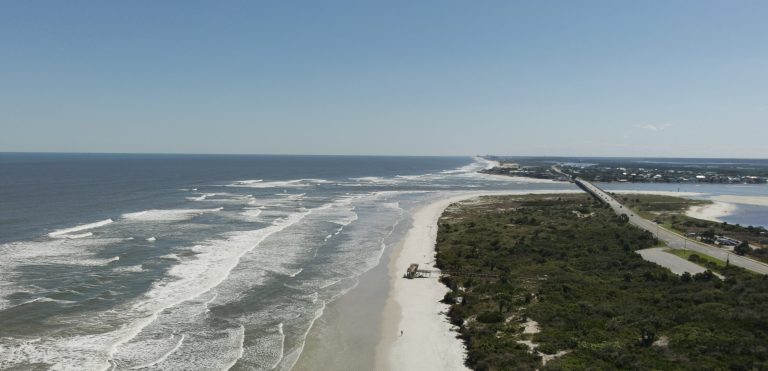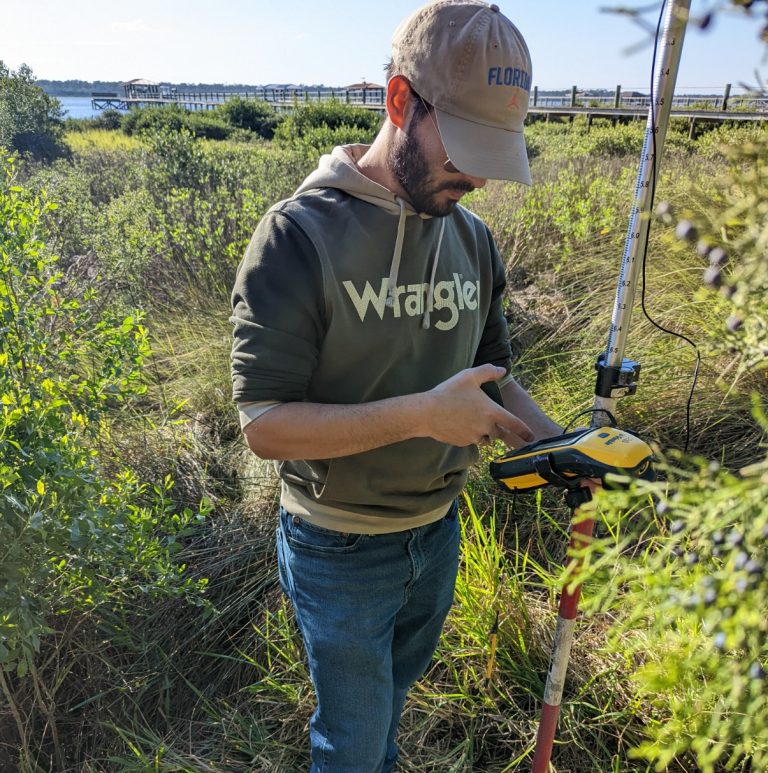Scientists at the University of Florida are tracking the level of septic tank pollutants that reach the Guana Tolomato Matanzas (GTM) estuary. These efforts will support resource managers in estimating the amount of coliforms entering the estuary and prioritizing septic to sewer conversion efforts.
“There is no comprehensive study that estimates coliform loads from residential septic tanks into an estuary on a household-by-household basis,” said Alberto Canestrelli, Ph.D., assistant professor in the University of Florida’s (UF) Department of Civil and Coastal Engineering and project lead. “Some studies have looked at coliform release in rivers and estuaries, but they’re usually measuring one household or one specific location. There has not been a large-scale study like this.”

Collaborators Elise Morrison, Ph.D., assistant professor at UF’s Environmental Engineering Sciences Department, environmental engineering student Olivia Bergmann and Todd Osborne, Ph.D., associate professor at the Whitney Lab of Marine Bioscience are monitoring fecal bacteria indicators in three sites, and a total of nine wells. Two of the sites are on private property, one of which is serving as the pilot site, and the third is on undisturbed land.
The team is analyzing the seasonal changes in coliform loads, the time the coliform stays in the soil and how the bacteria decays. Data collection began at the pilot site in October 2022, coincidentally before Hurricane Nicole, at the remaining two sites in March 2023 and will continue until the end of summer.
“The concentration of coliform at the well near the estuary was surprisingly high after Hurricane Nicole,” said Canestrelli. “It was well above the limits.”

Using the collected data, the researchers are running a combination of groundwater and surface water models to validate field observations of decreases in coliform concentration from the septic tanks to the estuary. The models will cover the entire estuary, including septic tanks around it. By tracking pollutants from each individual household, the models will estimate each household’s contribution to coliform pollution. In the final phase of the project, the team will map the amount of coliform from septic tanks entering the GTM estuary.
“This study offers valuable insights into the present contribution of septic tanks to estuarine coliform pollution by considering factors like drain field elevations, distance of tank from the water body and soil types,” said Canestrelli.
This three-year project will continue until May 2025 and is funded by the U.S. Army Corps of Engineers.
—
By Megan Sam
